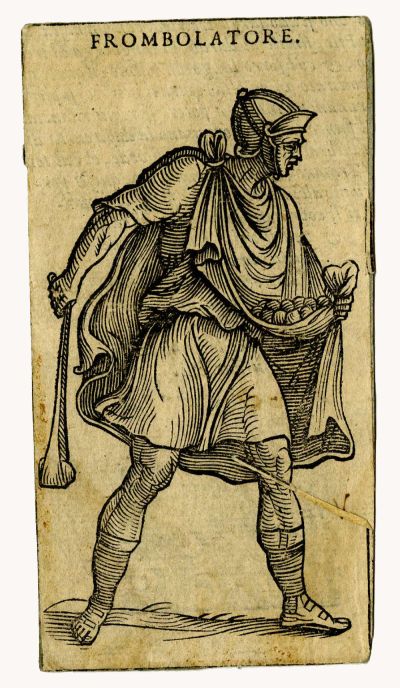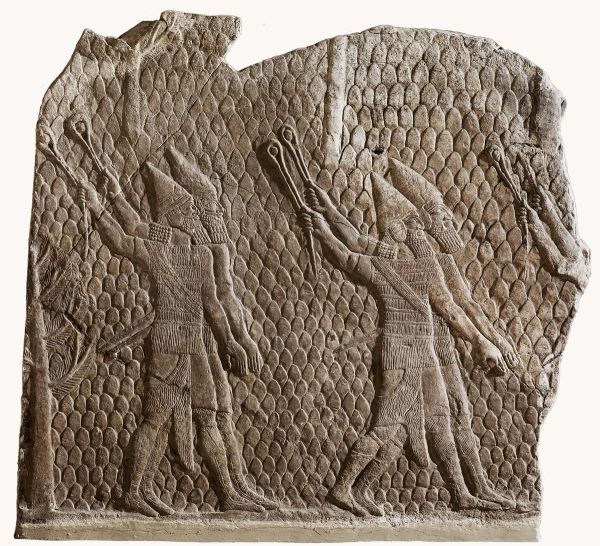


The sling as a weapon was already known to Neolithic peoples around the Mediterranean, but it is likely to be much older.
First documentation comes from a  Neolithic drawing of a slinger from Çatalhöyük, Turkey (ca. 7000 BC).
Neolithic drawing of a slinger from Çatalhöyük, Turkey (ca. 7000 BC).
The Frombolatore or Fromboliere is an old war machine, the possibility of hitting the enemy from far away was a precious skill, and it was quite used in the Roman Army too.
The Frombolatore represented the power of artillery in a sling, before the invention of gunpowder (here in the West countries, at least).
Throwing heavy stones against the enemy, was not an easy job, and quite an important one and the best recognized slingers were the Balearic.
The Balearic slingers, which were basically a mercenary army, had been a big asset in the Roman armies for a long time.
While most slingers would throw stones of about 50-80 grams, the Balearic slingers would throw stones of around 400 grams and more, making quite a difference in their impact.
In the Venice Carnival the supposed Frombolatore skills were used to have fun, of course, but I would be little surprised if these Mattaccini - in throwing their perfumed eggs - were really hitting their intended targets or only making big messes around ...
Aa much as the bow was considered the most common distance weapon, the sling too may have been one of the first "power weapons" allowing to hit the enemy at a distance.
This image is the first high quality documentation of this powerful army: the slingers, the frombolatores.
From it (and other studies too) we can deduce part of the dynamics:
- slingers were throwing stones about 2.5" in diameter
- they were using a vertical circle, instead of the horizontal above-the-head circle, as other slingers would use, i.e. the Egyptians.
Gypsum wall panel showing two pairs of Assyrian slingers at a siege, in mountainous country. Above and on the left are parts of fir trees. The arms of a third pair of slingers can be seen on the right. Panel from the South-West Palace of Nineveh, Assyria (modern Kuyunjik, Mousil city, Iraq) (700-692 BC) - London British Museum

“Balearic” means - literally - “Master of Throwing”
The Balearic slingers - which were considered the best slingers of the ancient times - were trained already as kids to hit the target with maximum precision.
They were able to throw larger stones than others, such making their impact stronger.
And so they were required by all armies of the time, and it seems they were paid in wine and women, instead of silver or gold.
Image of a Balearic slinger: notice the huge stone, sort of a trademark of their skills and power.
Detail of a plaster cast representing a Roman Army, with a Balearic Slinger in evidence, from the "Colonna Traiana" in Rome.

